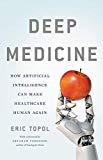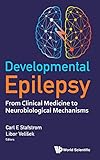Select newly added HSL titles. A full list of new titles can be found online.
Deep medicine: how artificial intelligence can make healthcare human again, by Eric Topol.
“One of America’s top doctors reveals how AI will empower physicians and revolutionize patient care Medicine has become inhuman, to disastrous effect. The doctor-patient relationship–the heart of medicine–is broken: doctors are too distracted and overwhelmed to truly connect with their patients, and medical errors and misdiagnoses abound. In Deep Medicine, leading physician Eric Topol reveals how artificial intelligence can help. AI has the potential to transform everything doctors do, from notetaking and medical scans to diagnosis and treatment, greatly cutting down the cost of medicine and reducing human mortality. By freeing physicians from the tasks that interfere with human connection, AI will create space for the real healing that takes place between a doctor who can listen and a patient who needs to be heard. Innovative, provocative, and hopeful, Deep Medicine shows us how the awesome power of AI can make medicine better, for all the humans involved.” — Amazon.com |
W26.55 A7 T675d 2019 |
Kirkpatrick’s four levels of training evaluation, by“A timely update to a timeless model. Don Kirkpatrick’s groundbreaking Four Levels of Training Evaluation is the most widely used training evaluation model in the world. Ask any group of trainers whether they rely on the model’s four levels Reaction, Learning, Behavior, and Results in their practice, and you’ll get an enthusiastic affirmation. But how many variations of Kirkpatrick are in use today? And what number of misassumptions and faulty practices have crept in over 60 years? The reality is: Quite a few. James and Wendy Kirkpatrick have written Kirkpatrick’s Four Levels of Training Evaluation to set the record straight. Delve into James and Wendy’s new findings that, together with Don Kirkpatrick’s work, create the New World Kirkpatrick Model, a powerful training evaluation methodology that melds people with metrics. In Kirkpatrick’s Four Levels of Training Evaluation, discover a comprehensive blueprint for implementing the model in a way that truly maximizes your business’s results. Using these innovative concepts, principles, techniques, and case studies, you can better train people, improve the way you work, and, ultimately, help your organization meet its most crucial goals.” — EBSCOhost |
Online |
Tresch and Aronow’s cardiovascular disease in the elderly, edited by Wilbert S. Aronow [NYMC Author], Jerome L. Fleg, Michael W. Rich.
“With an exponential growth in the number of older adults, understanding the common disorders of the elderly patient requiring cardiac care is becoming increasingly important. Incorporating recent advances in the field, Tresch and Aronow’s Cardiovascular Disease in the Elderly 6th Edition has been completely revised and updated to provide cardiologists, primary care physicians, geriatricians and other clinicians caring for the elderly a comprehensive and accessible overview of the epidemiology, pathophysiology and treatment of cardiovascular disorders in older patients.”– Amazon.com |
WG100 C2672 2019 |
Caring for the individual patient: understanding heterogeneous treatment effects, by David Kent, et al.
“Evidence-based medicine arose from a clear need and represents a major advance in the science of clinical decision-making. Despite broad acceptance of evidence-based medicine, however, a fundamental issue remains unresolved: evidence is derived from groups of people, yet medical decisions are made by and for individuals. For evidence to be more applicable to individual patients, we need to combine methods for strong causal inference (first and foremost, randomization) with methods for prediction that permit inferences about which patients are likely to benefit and which are not. Better population-based outcomes will only be realized when we understand more completely how to treat patients as the unique individuals they are.“ — National Academies Press |
Online |
Developmental epilepsy: from clinical medicine to neurobiological mechanisms, edited by Carl E. Stafstrom, Libor Velíšek [NYMC Author].
“This is a collection of chapters from renowned authors focused on the contemporary issues in developmental epilepsy, from both clinical and basic science perspectives. Developmental epilepsy (or epilepsy syndromes), while receiving much more attention than 20 years ago, is still not well understood. This lag in research is reflected in the challenges of treating developmental epilepsy. The book discusses these challenges in the clinic and brings them back to the laboratory bench (and in some cases back to the bedside). This book fills a gap in the literature on developing epilepsy by bridging current clinical knowledge with basic and translational research in the developing brain relevant for developmental epilepsy.The book is introduced by a chapter on brain development to provide a background for understanding when and how seizures and epilepsy can emerge. Recent clinical research indicates strong relationship between childhood epilepsy and developmental cognitive impairment. This connection can be studied in experimental animals and can uncover developmental mechanisms common to both conditions. Targeting those mechanisms might reveal disease-modifying treatments. Febrile seizures are very common in the pediatric population and their impact on further epilepsy development is explored. The link between immunity, inflammation and epileptogenesis in the developing brain is explored.” — Amazon.com |
WL385 D489 2019 |




